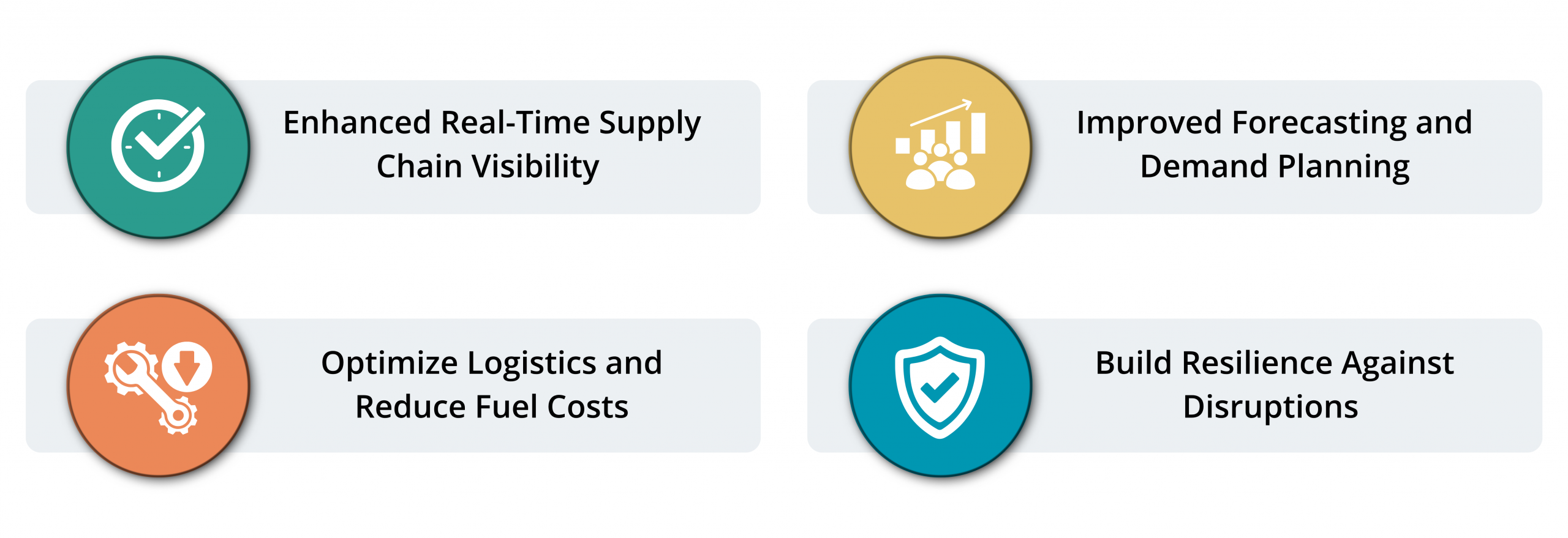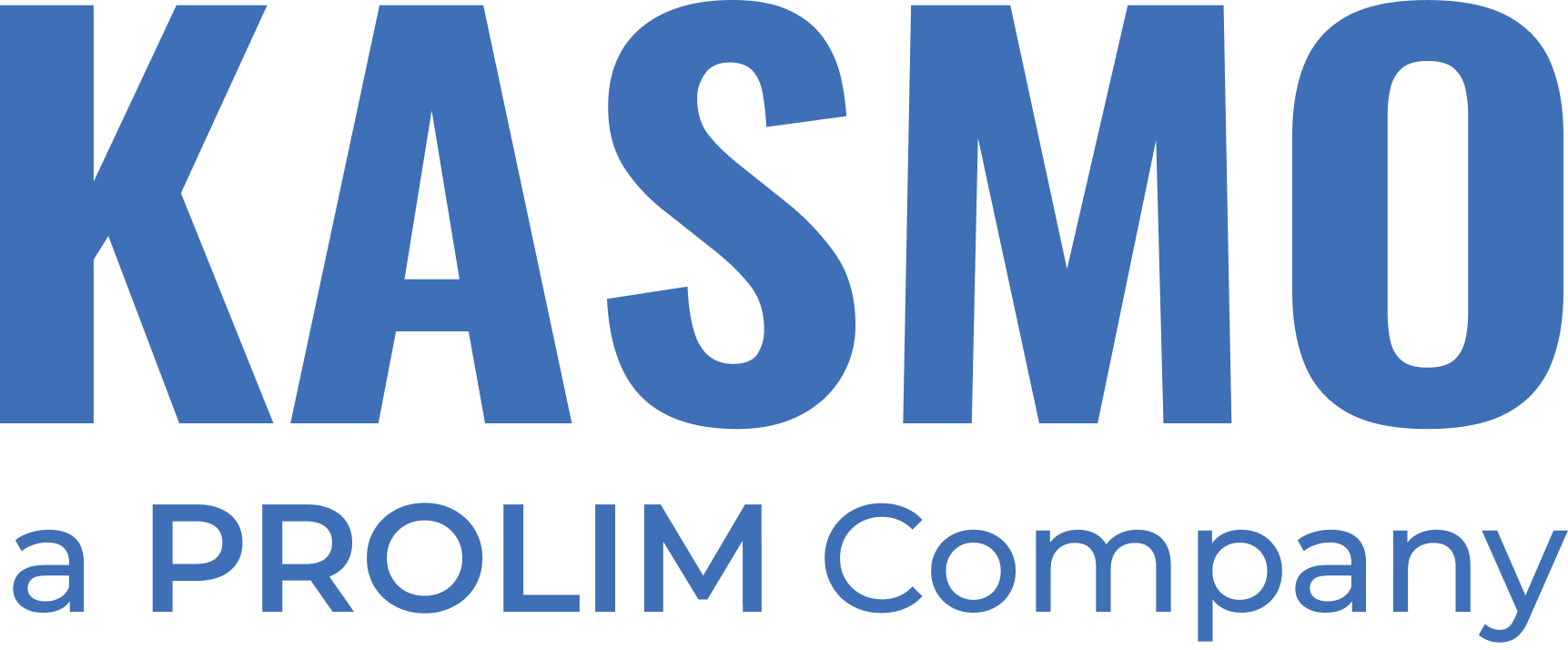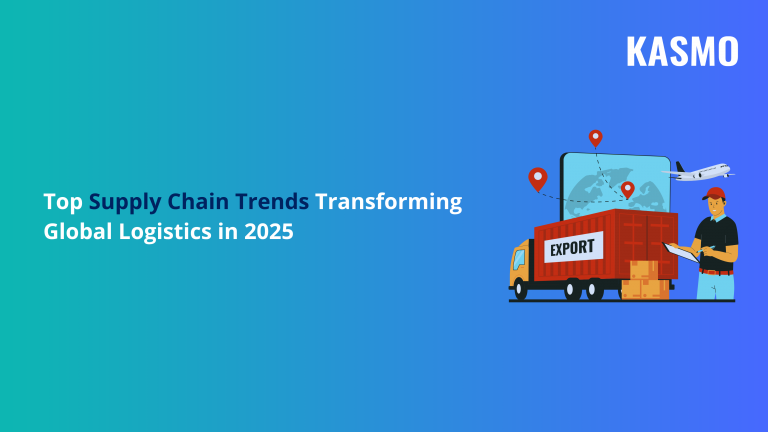Top Supply Chain Trends in 2025
As global economic and political conditions shift, companies are reimagining their supply chain strategies to build agility, efficiency, and resilience into every node of the network. Here are the most important supply chain trends to watch in 2025, and explore how they’re reshaping the future of logistics, fulfillment, procurement, and planning.

Robotics
Robotics have moved far beyond assembly lines. Today, advanced machines are transforming warehouse and distribution center operations. These machines don’t replace human workers; they work with them. These robots assist human workers with heavy lifting and repetitive packing tasks, guided by AI and machine learning algorithms.
It addresses two persistent industry challenges: labor shortages and rising labor costs. By automating physical and repetitive jobs, companies free up human staff for roles that require strategic decision-making capabilities.
AI-powered Decision-Making
The trend to move from reactive decision-making to proactive one has shaken up regular operations for suppliers. As vast volumes of data are produced from supply chains, suppliers are turning to AI and advanced analytics to interpret that data and take swift action. This helps them gain full visibility into the inventory levels, monitor supplier performance, prevent shipping delays, and adapt to weather disruptions.
AI-powered platforms will help suppliers forecast demand, optimize inventory, and identify supply chain disruptions in real-time. AI-powered platforms combined with visualization tools make data easy-to-understand, prompting teams to act faster without making errors.
Automation
With the help of AI, suppliers can now auto-generate purchase orders and route deliveries easily to issuing real-time stock alerts and processing invoices. Automating routine workflows cut manual errors, speeds up delivery, and reduces operational cost, allowing suppliers to create strategies to ensure smooth supply chain management.
Cloud Platforms
Legacy systems create challenges for suppliers when they try to extract and analyze data. With growing customer expectations, suppliers are overwhelmed with the huge amount of data. Legacy systems also lack the scalability to store growing volumes of data. To tackle this challenge, suppliers are increasingly inclined towards adopting cloud platforms like Snowflake.
Snowflake AI Data Cloud platform enables suppliers to store, analyze and scale data with their growing business data volume. Leveraging Snowflake, suppliers can even forecast demand and predict disruptions, which helps them take steps to handle disruptions.
IoT Devices
IoT devices like sensor-equipped devices monitor everything from cargo temperature and humidity to tracking traffic congestion and weather patterns. These insights help supply chain leaders make informed decisions more easily. Suppliers are preparing to adapt more rapidly to IoT devices in their operations as it will help them better track goods, reduce loss, improve customer satisfaction, and ensure compliance with strict regulations.
Digital Twins
Digital twins simulate supply chain performance under various conditions like natural disasters, supplier delays, or sudden demand surges. They help suppliers identify vulnerabilities and test solutions before disruptions occur.
Why Suppliers Need to Leverage Snowflake to Streamline Their Supply Chain
As supply chains become increasingly complex and fragmented, suppliers are under immense pressure to improve visibility, optimize logistics, and deliver products faster, all while managing costs, compliance, and reducing carbon emissions.
Snowflake AI Data Cloud platform enables suppliers to unify siloed data from across their operations, including warehouse management, transportation, inventory, production, and even third-party partners, into a single, scalable, and secure cloud platform.
Here’s why suppliers are turning to Snowflake to better make their supply chain risk management strategies:

Enhanced Real-Time Supply Chain Visibility
Suppliers often struggle with fragmented data stored across spreadsheets, ERPs, and legacy systems. Snowflake eliminates these silos by enabling real-time data sharing across stakeholders. With cross-cloud collaboration capabilities in Snowflake, suppliers can gain full transparency across the value chain: where shipments are, how much inventory is on hand, and what disruptions might affect production or delivery. This leads to better planning, fewer losses, and stronger relationships with partners.
Improved Forecasting and Demand Planning
Forecasting demand is crucial to make better supply chain risk management strategies. Snowflake AI Data Cloud empowers suppliers to combine internal ERP data with third-party datasets, such as market trends, consumer behavior, and even weather forecasts. This enriched data environment enables suppliers to make highly accurate, AI-driven demand forecasting models.
When suppliers can anticipate shifts in demand or raw material costs, they can plan production more efficiently and avoid overstocking or stockouts, increasing profit margins and customer satisfaction.
Optimize Logistics and Reduce Fuel Costs
With transportation costs rising and customers closely following businesses on their sustainability practices, suppliers must optimize their logistics operations. Snowflake enables suppliers to improve route planning, delivery timing, and reduce disruptions in supply chains.
Suppliers are also empowered with predictive maintenance, as Snowflake enables suppliers to consolidate IoT sensor data and equipment status in a single platform. This reduces vehicle downtime and extends machinery life.
Build Resilience Against Disruptions
Snowflake allows suppliers to integrate third-party data (such as global economic situations, port congestion reports, and geopolitical alerts) into their planning systems, giving them a proactive edge. This holistic view allows procurement teams to identify risks early, source alternative materials, and change logistics plans.
How Kasmo’s Supply Chain AI Advisor Accelerator Helps Suppliers
Suppliers face increasing demand to deliver on time, manage inventory efficiently, and adapt quickly to market changes. Traditional supply chain planning methods often fall short, resulting in costly overstocking, missed sales opportunities, or production delays.
Kasmo’s Supply Chain AI Advisor accelerator is an advanced machine learning-powered tool designed to bring intelligence, speed, and precision to supply chain operations. By integrating two powerful predictive models, this AI-driven solution empowers suppliers to make smarter decisions, optimize inventory, and improve supply chain performance.
AI-Powered Demand Forecasting
Kasmo’s Demand Forecasting Model leverages historical sales data, market trends, and seasonal patterns and delivers highly accurate demand predictions. Suppliers can use this model to:
- Predict product demand with confidence
- Improve production planning and procurement cycles
- Avoid excess inventory or costly stockouts
- Align manufacturing capacity with real market needs
Optimized Raw Material Forecasting
Running out of critical raw materials or over-purchasing inventory can both be cost-effective for suppliers. Kasmo’s Raw Material Forecast Model solves this challenge by analyzing production schedules, current inventory levels, and historical consumption trends to accurately forecast raw material requirements.
By integrating both models, Kasmo delivers a holistic solution that allows suppliers to optimize every step of the supply chain. This includes:
- Reducing costs by minimizing inventory waste and streamlining procurement
- Enhancing agility by enabling faster responses to market changes or supply disruptions
- Eliminating bottlenecks with data-driven planning for materials, labor, and logistics
- Boosting employee performance through smarter, faster decision-making across teams
Kasmo’s solution is designed with enterprise-grade security and scalability, making it suitable for both mid-sized and global suppliers. Whether integrated into an existing ERP ecosystem or used as a standalone intelligence layer, it delivers reliable insights without compromising data privacy or compliance.
Why This Matters for Suppliers
The success of a supply chain depends on the ability of suppliers to act fast, predict market changes accurately, and adapt continuously. Kasmo’s Supply Chain AI Advisor accelerator, powered by Snowflake, enables suppliers to turn raw data into actionable insights and facilitate accurate prediction and forecasting.
Conclusion
As supply chains continue to evolve, staying ahead of supply chain trends in 2025 is essential for suppliers. From robotics and AI-driven analytics to IoT-powered visibility, these trends are reshaping how companies manage complexity and uncertainty. Implementing robust supply chain risk management strategies is crucial for suppliers to stay resilient in this dynamic market.
By leveraging Snowflake AI Data Cloud and Kasmo’s Supply Chain AI Advisor accelerator, suppliers can optimize operations, improve forecasting accuracy, and mitigate risks effectively. By embracing these trends in supply chain management, suppliers can build agile, efficient, and sustainable supply chains that deliver value from end to end.
Investing in proactive risk management strategies not only enhances operational efficiency but also empowers suppliers to tackle supply chain disruptions and focus on new opportunities.



